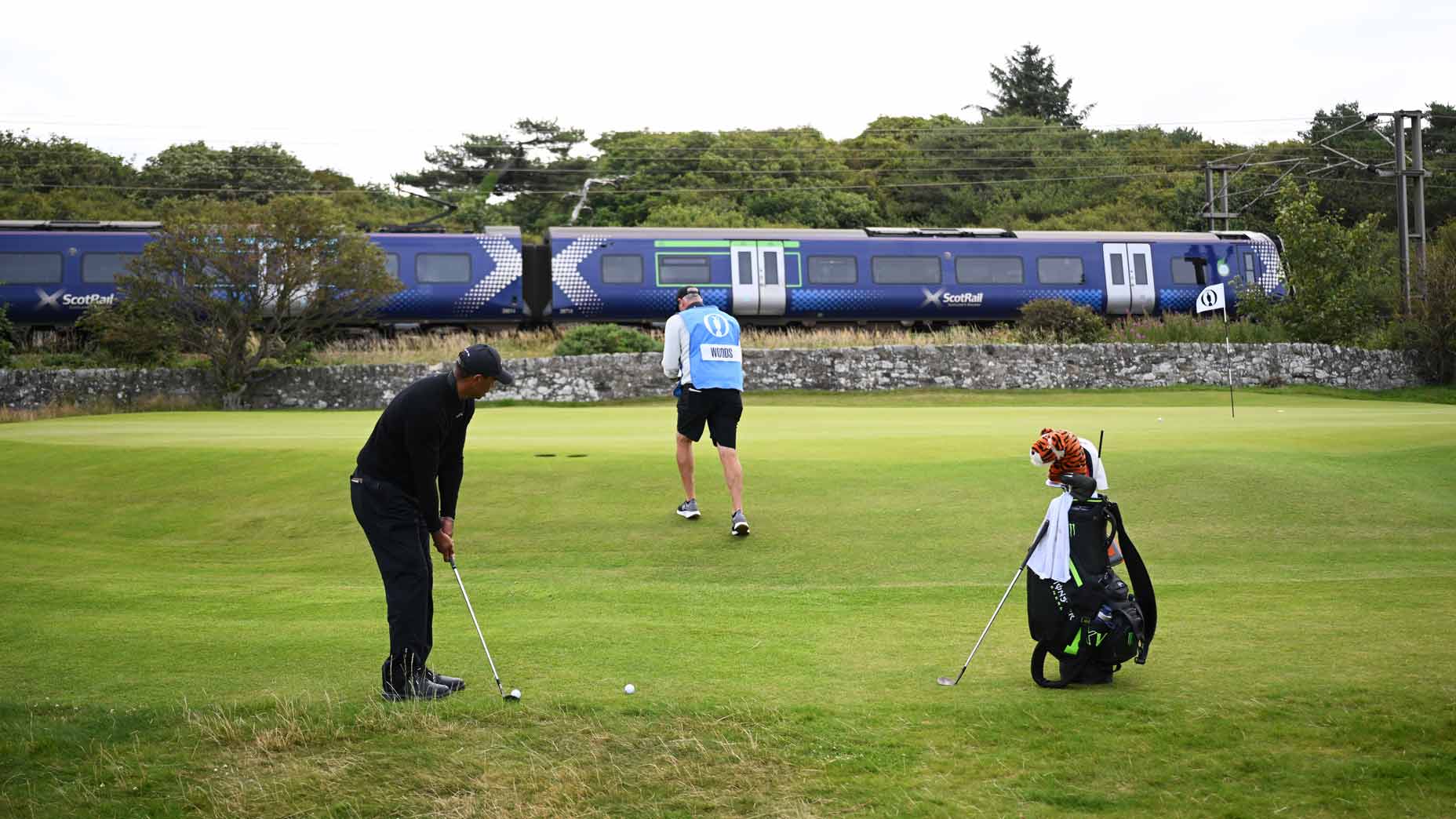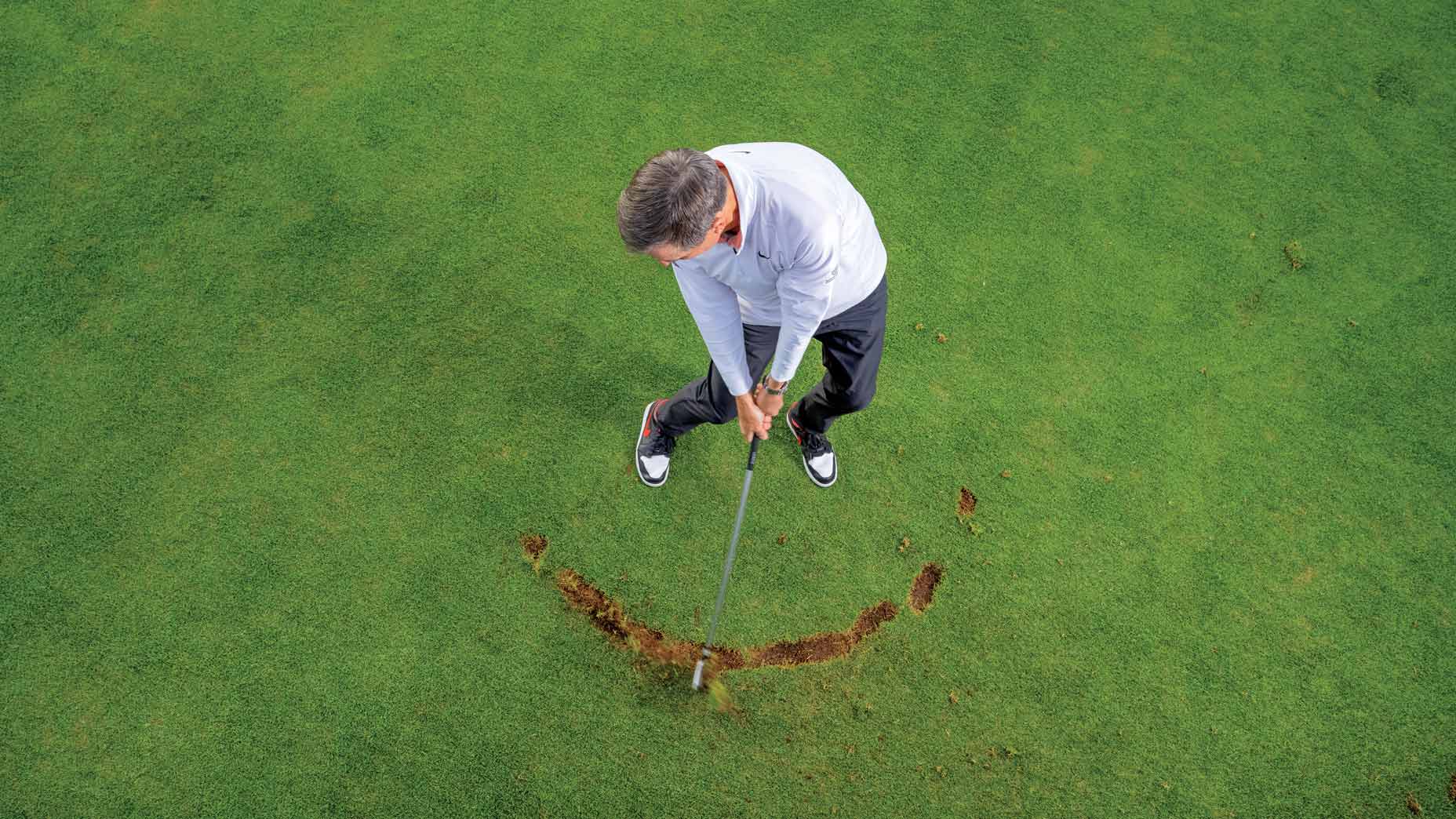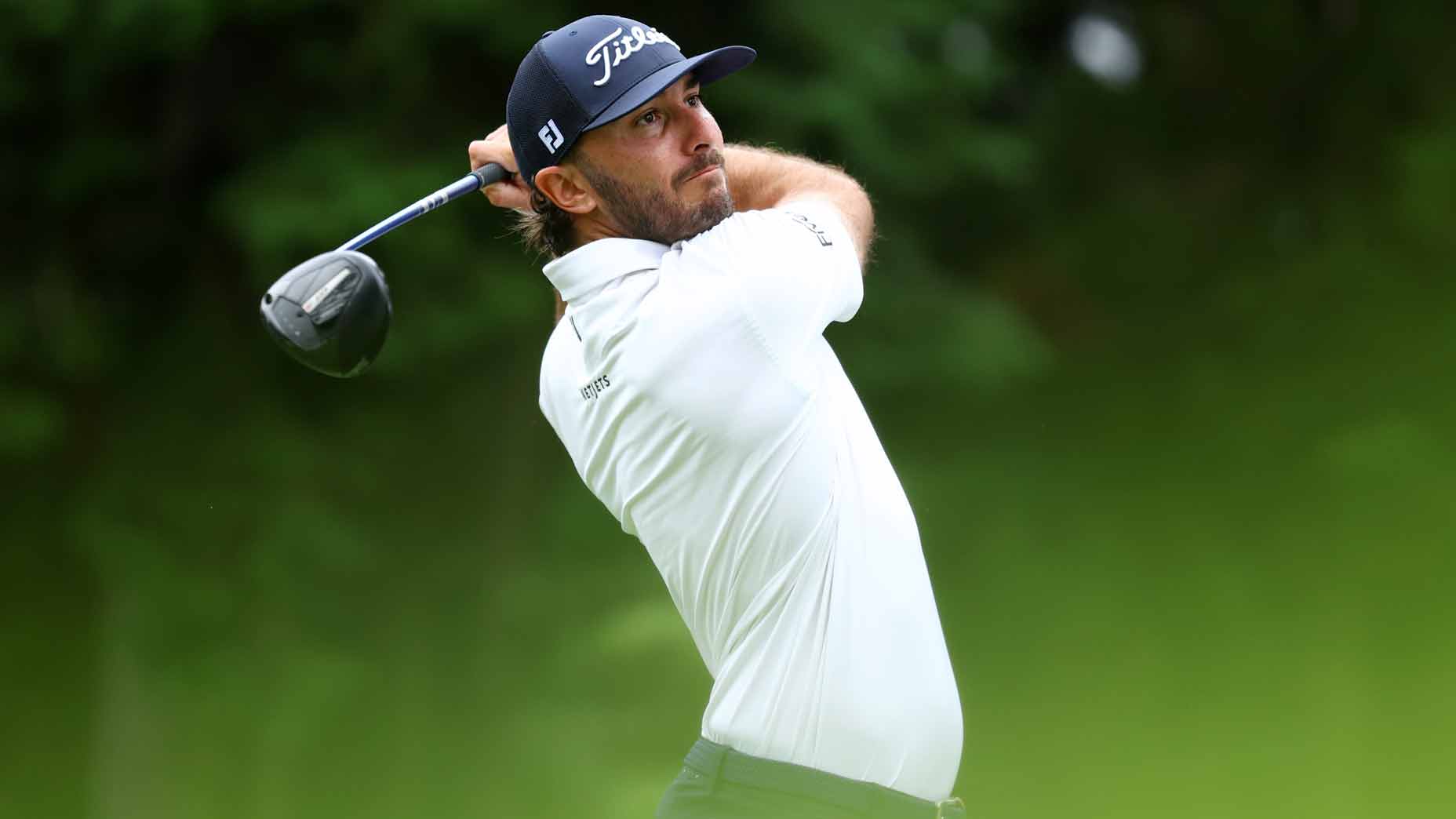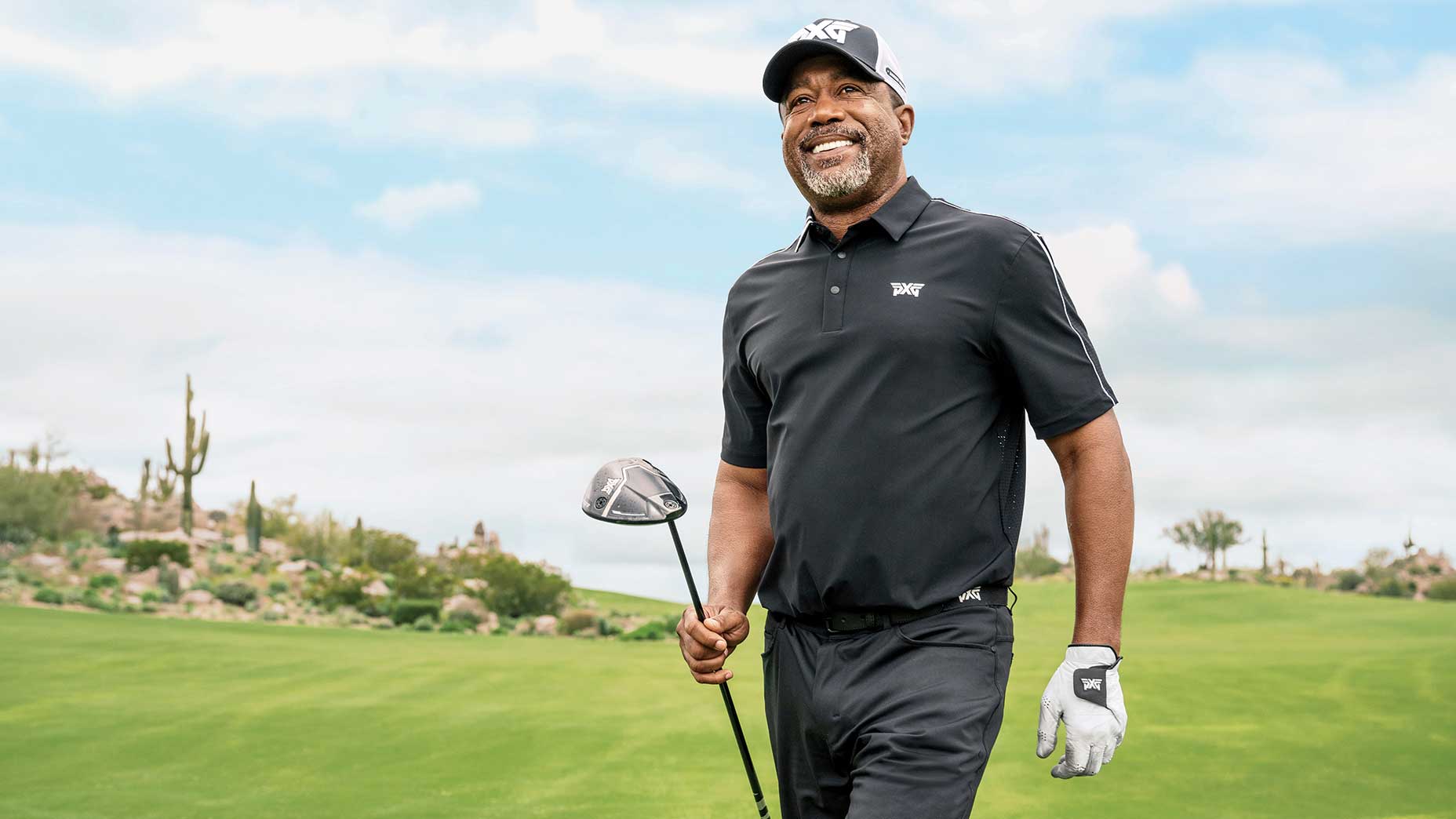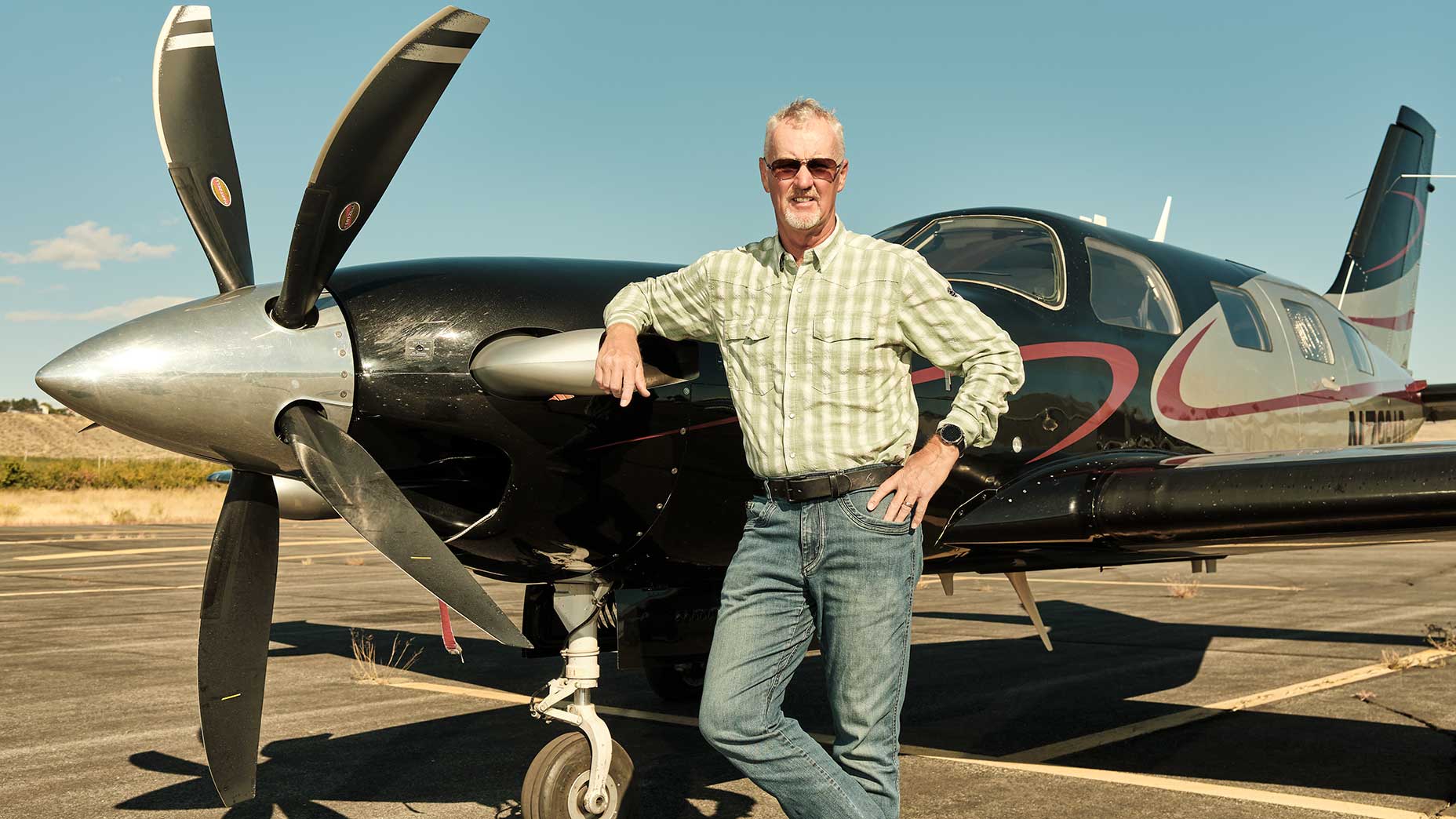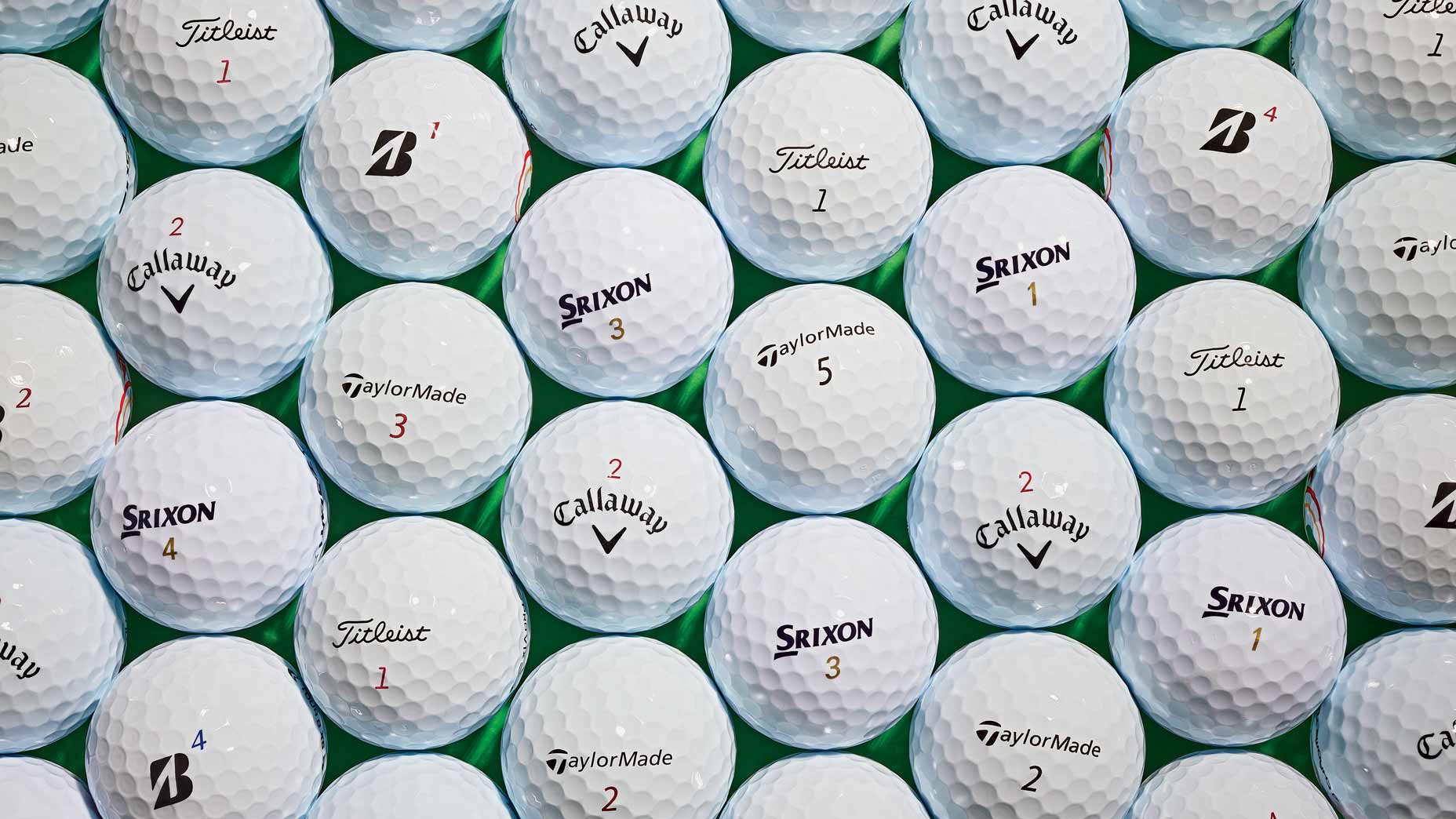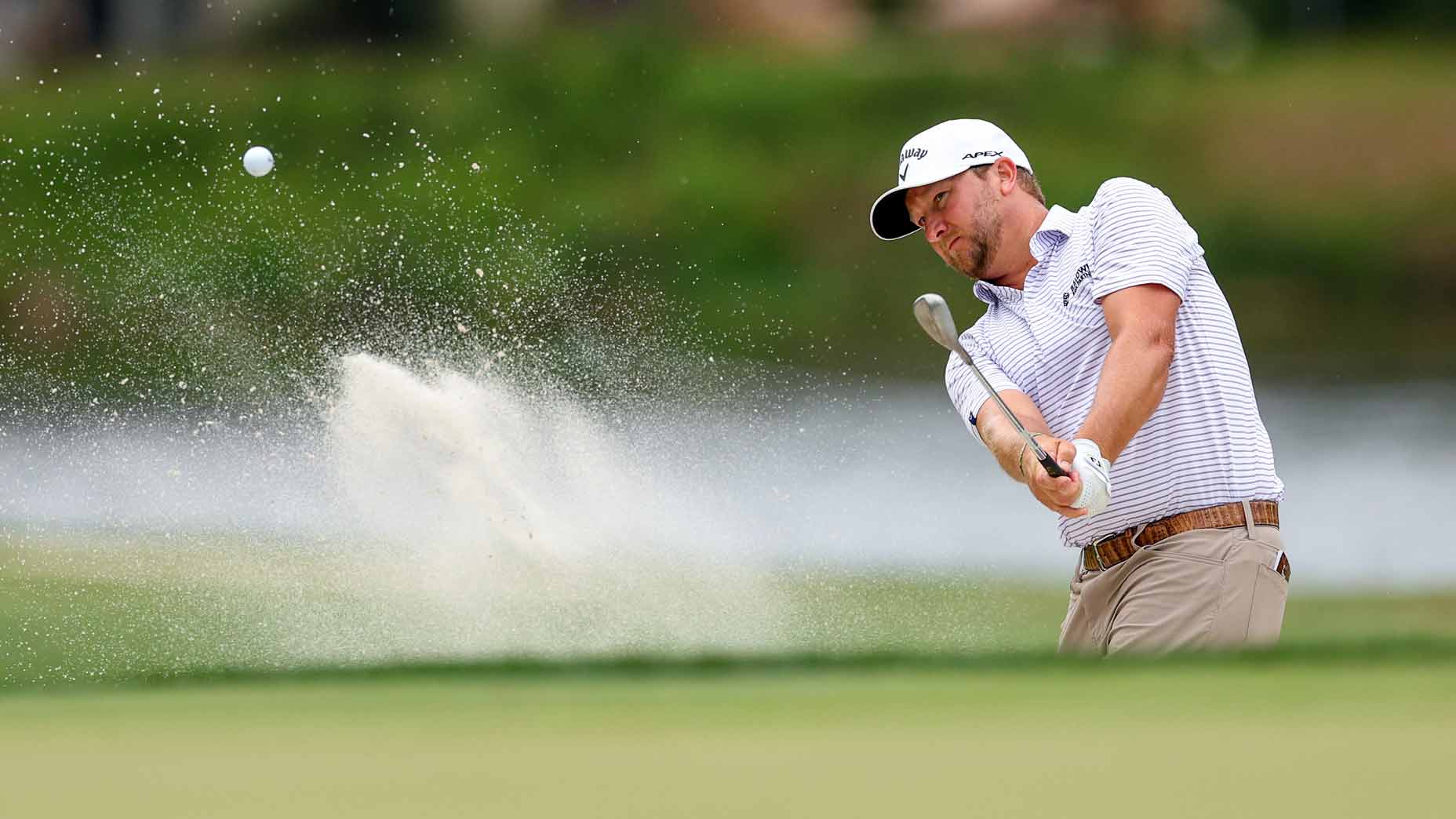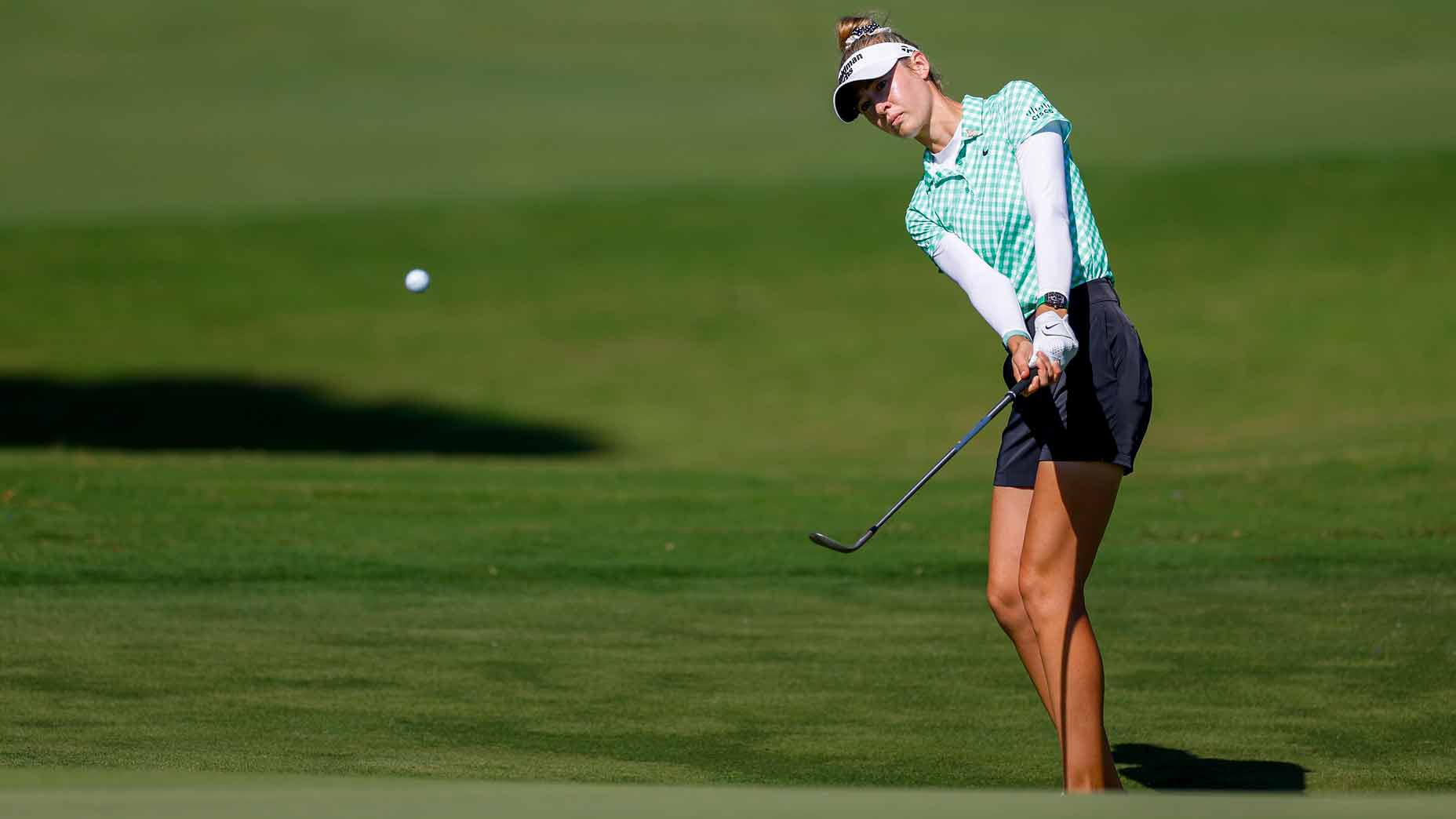The 5-step secret to Jess and Nelly Korda’s silky golf swings
- Share on Facebook
- Share on Twitter
- Share by Email
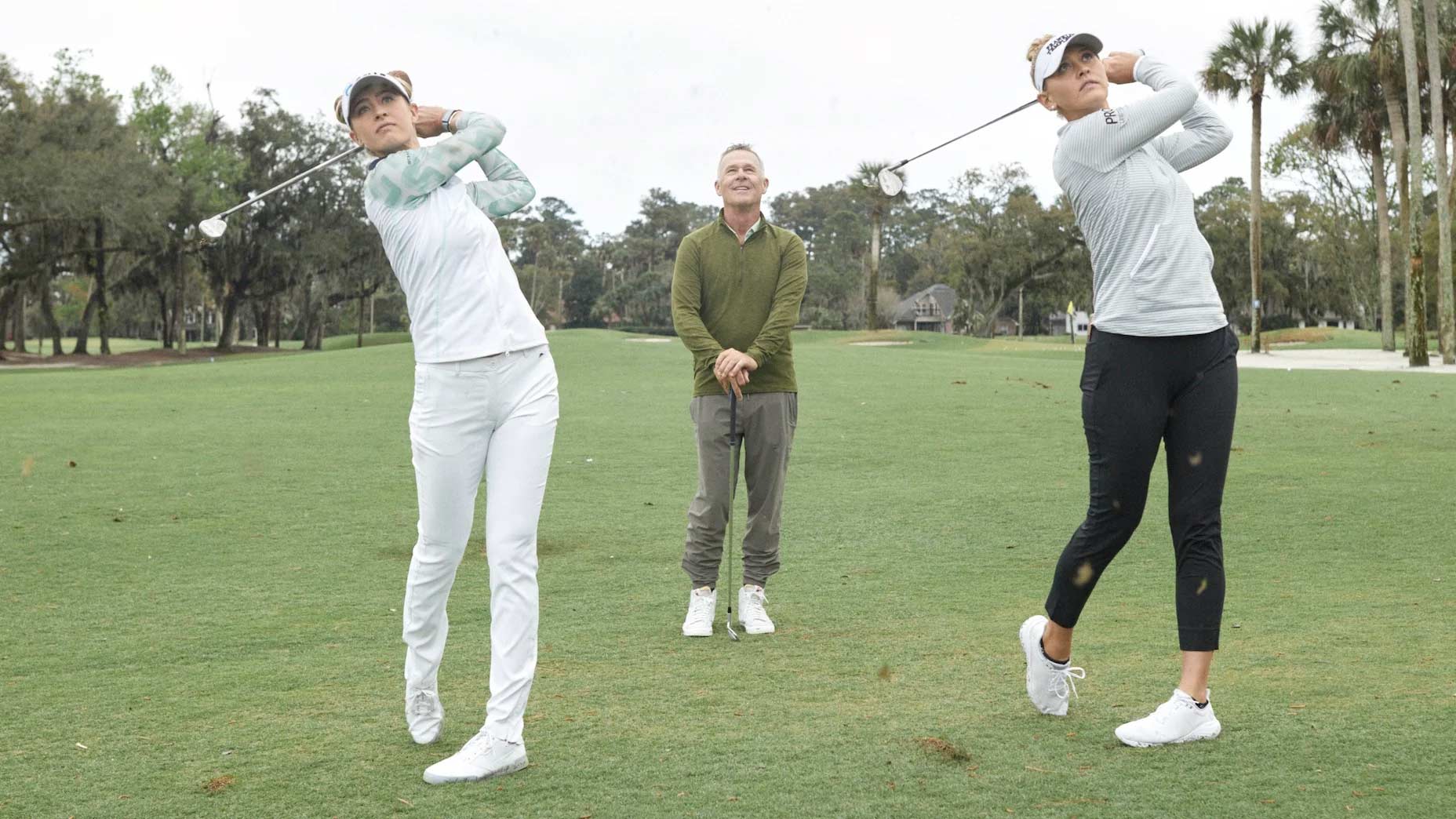
When it comes to the golf swing, "less is more," says GOLF Top 100 Teacher Jamie Mulligan.
Photo: Michael Schwartz; Hair: Sierra Siraky; Makeup: Paulina Perez
I consider myself very lucky to coach both Nelly and Jess Korda. They’re each fierce competitors with great heads on their shoulders — a true inspiration to the next generation of female golfers.
They’ve also got two of the most beautiful, efficient and technically gifted golf swings in the game today. Whenever someone asks how they can swing like Nelly or Jess, my answer is simple: The key to an effective golf swing is that less is more.
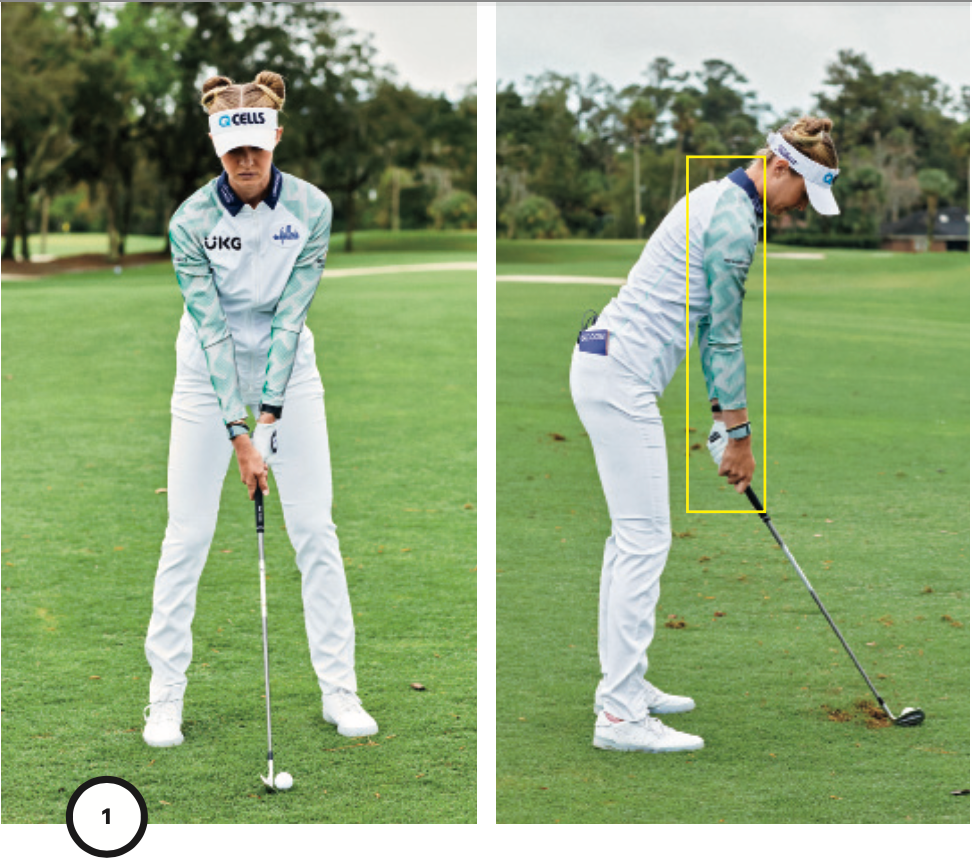
1. “Set” Your Setup
A balanced address built around good fundamentals allows your athleticism and ability to shine.
A poor setup can create issues that you’ll need to account for during your swing. Nelly works hard at keeping her posture athletic, with a straight spine and her hands hanging directly under her shoulders. The ball position for her shorter clubs, like the one she’s hitting here, is in the middle of her stance. They’ve also got two of the most beautiful, efficient and technically gifted golf swings in the game today. Whenever someone asks how they can swing like Nelly or Jess, my answer is simple: The key to an effective golf swing is less is more

2. “Load” Your Takeaway
Using your big muscles to start your swing creates a powerful coil—and more “oomph” at impact.
In my opinion, Jess has the best swing in golf, which starts with her takeaway. You see me holding a club under the shaft of her club — that’s to help her engage the big muscles in her arms and torso and keep her takeaway in one piece. The big mistake? Using the smaller muscles in your wrists.
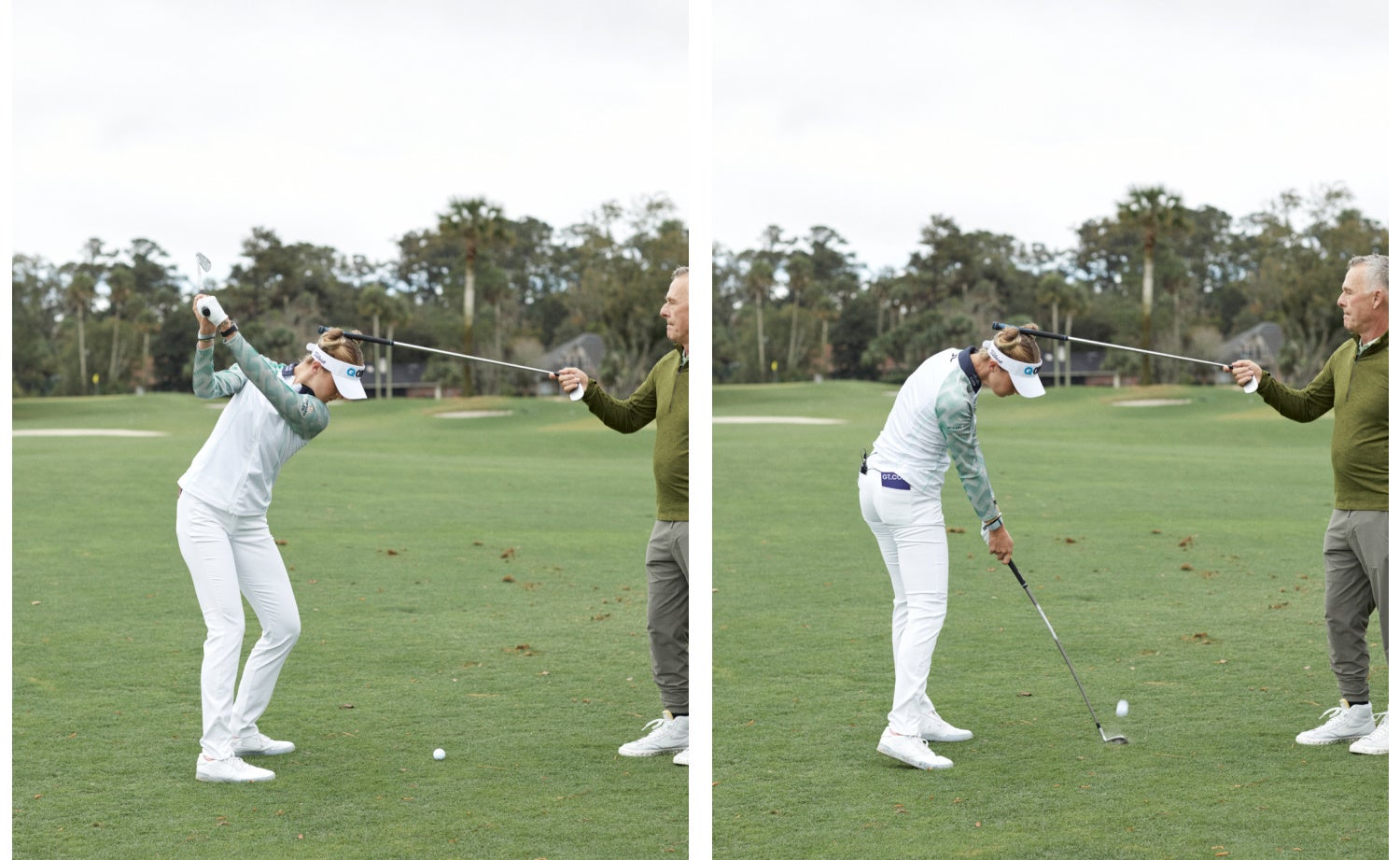
3. “Stablize” your center
Turning around a stable center leads to consistency and eliminates the need for compensations
I’ll often place a club lightly on Nelly’s head as a way to make sure she swings around a centered base. A little movement is fine, but big slides with your hips hinders your ability to turn effectively and robs you of power. Coiling around a “quiet” body and into your trail hip limits variables that lead to inconsistent contact.
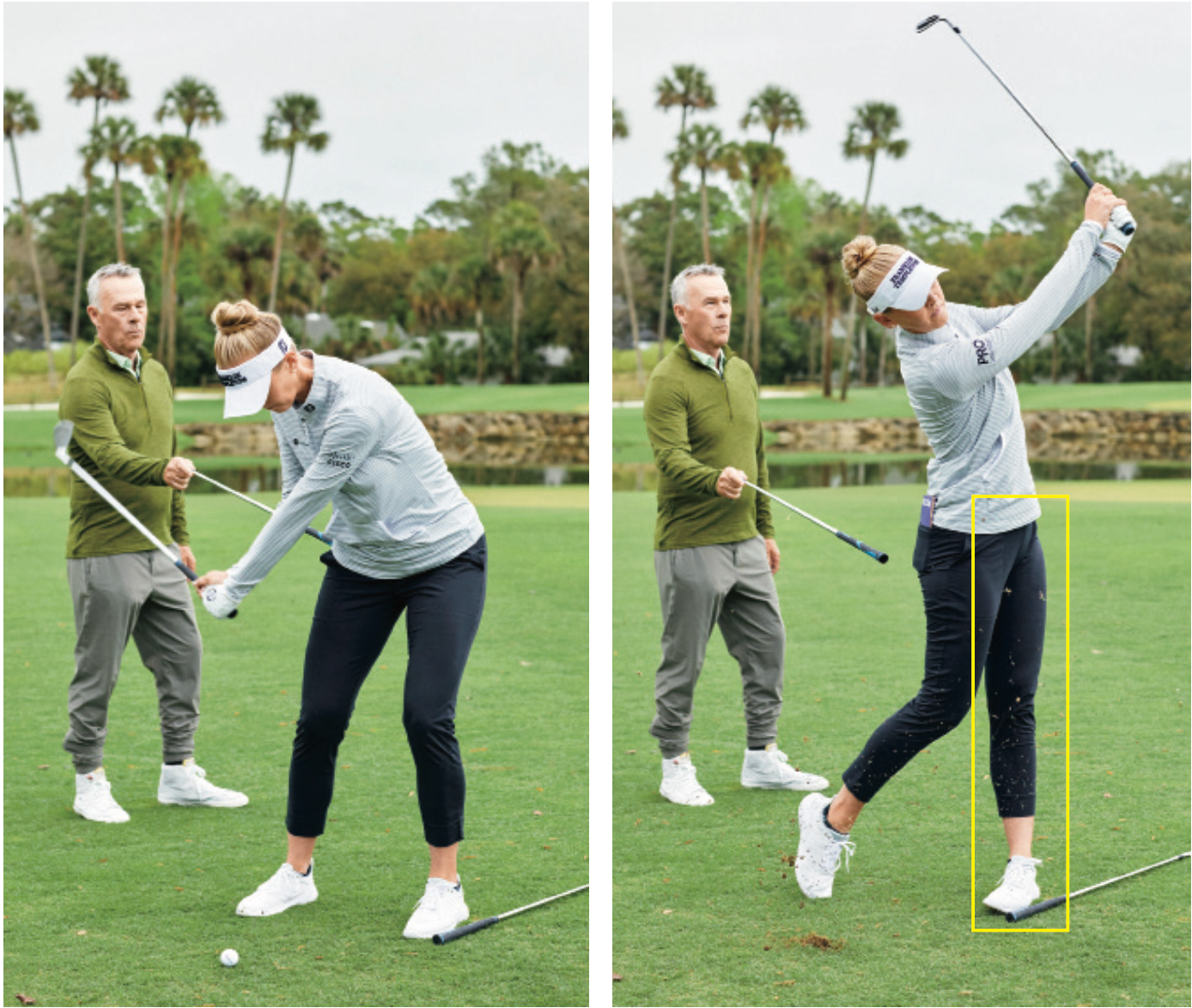
4. “Shift,” then “Turn”
Moving pressure to your front leg and then turning creates tour-level compression.
In this drill, I’ve placed a club on the ground by Jess’ front foot while “nudging” her hips toward it—and the target — with a second club at the start of her downswing. The goal of the drill is to make sure you finish with your weight over the club on the ground (and your front foot). When you do, it means that you’ve correctly rotated around your front leg and imparted a crisp strike on the ball. This drill takes the help of a friend, but it works wonders for your contact and consistency.
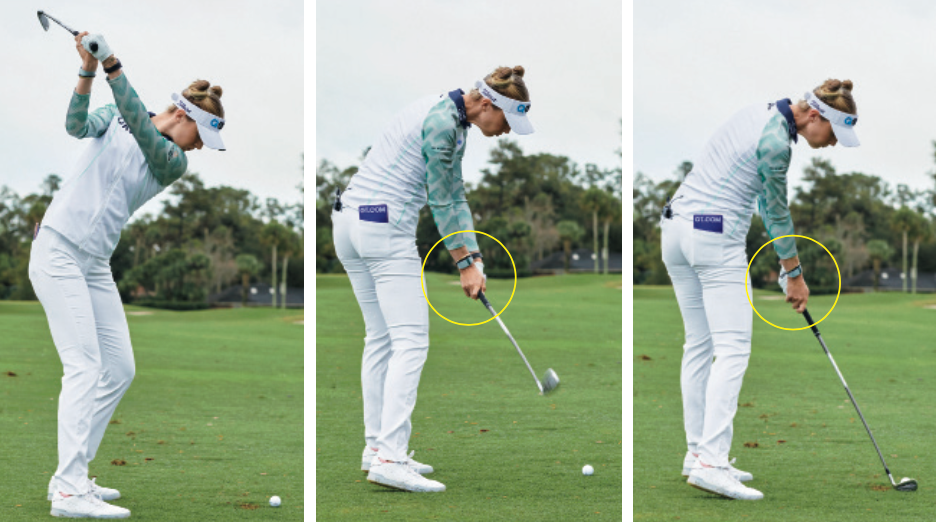
5. “Trap” Your Right Hand
Keep your right palm facing the ground as you come into impact for pure compression.
Often, Nelly feels like she’s hitting a forehand with her right hand: Her right palm faces the ground as she starts down. (Most rec players have their right palm facing away from their body.) It’s a feeling that helps her “trap” her short irons, like the 9-iron she’s striping here.
Latest In Instruction

Jamie Mulligan
Golf.com

Luke Kerr-Dineen
Golf.com Contributor
Luke Kerr-Dineen is the Game Improvement Editor at GOLF Magazine and GOLF.com. In his role he oversees the brand’s game improvement content spanning instruction, equipment, health and fitness, across all of GOLF’s multimedia platforms.
An alumni of the International Junior Golf Academy and the University of South Carolina–Beaufort golf team, where he helped them to No. 1 in the national NAIA rankings, Luke moved to New York in 2012 to pursue his Masters degree in Journalism from Columbia University. His work has also appeared in USA Today, Golf Digest, Newsweek and The Daily Beast.


